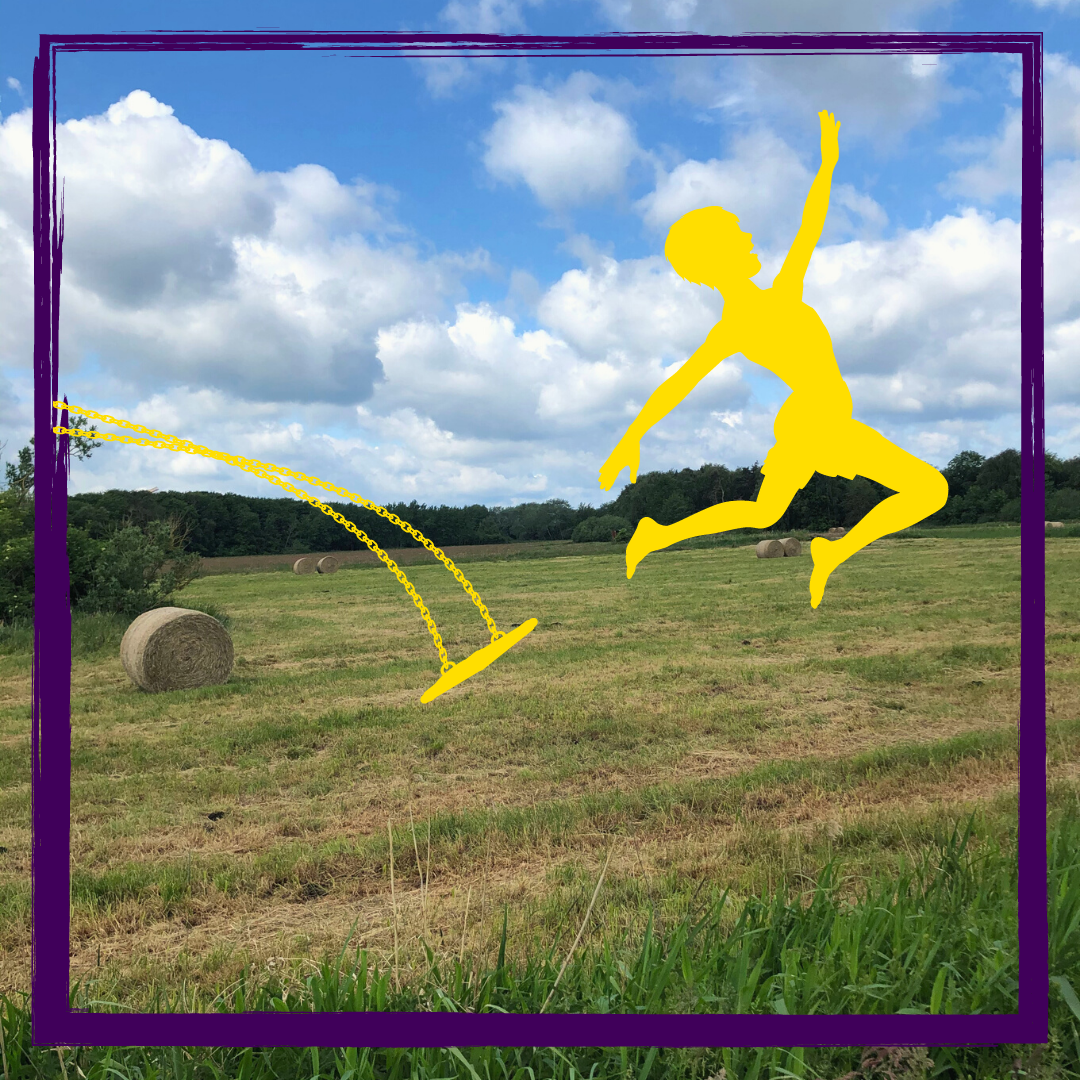
IF WE LAUNCH IT, THEY WILL COME, OR: 3 REASONS FOR AN ACTIVE LAUNCH OF DIGITAL HUMANITIES PROJECTS
Inhalt / Content
“If we build it, they will come” – this is an often used phrase in Digital Humanities. One of the first to use the phrase was Steven Ramsey, who actually wanted to focus less on the second part and more on the fact that building tools and services is central to the field (Ramsay, 2016). However, the phrase was then taken up relatively frequently. Sometimes it was questioned that users really would come just because something is “built” in the DH (Warwick et al., 2007; Van Zundert, 2012). In other approaches, the idea should be supported that digital tools develop a certain pull effect by themselves and without active launch and therefore have a special potential to open up science communication to a broader audience (Factor, 2011; Lohmaier, Söring and Rodriguez, 2011; Dahn, 2018).
However, when talking to people who are not from the digital humanities bubble, it is not uncommon to find that this pull effect has rarely been felt outside. On the one side the quite fast-growing community feels a certain hype about their own field. On the other side many people still do not even know that there is such a thing as Digital Humanities (Fenton, 2017). For me this is definitely a reason for more dissemination in our field. An active launch of projects, tools, websites and services is one way to get more attention for your own work. That is why I would like to talk to you today about the “active launch”.
What is a launch?
A launch is the introduction of a new product on the market (‘Duden Launch Spelling, Meaning, Definition, Origin’, no date). It is mostly used in advertising language. Waaahh! Market, advertising language – definitely things that humanities scholars could potentially be very frightened of.
The “silent launch”
But there seems to be a solution, the silent or soft launch (‘What is a soft launch?’, no date). This is the secret introduction of something. You would likely use a silent launch if you want only a few people to know about your project at first. This help you to see how things work out in a beta or test phase. With new projects, websites, services or similar, I find it difficult to find arguments for a silent and against a bombastic launch. I just don’t see why you shouldn’t want 100 people listen to a podcast from the beginning or to read a blog, or to know about a project instead of something like 10.
Active launch
An actively designed launch is usually more than a one- to two-week Twitter storm. An active launch is often planned over a long time. This is mostly due to the fact that a launch works best when you are well prepared. Obviously, you have to work out some kind of content. In fact, it’s best to do more than just a single blog article or the first podcast episode in advance. Because if you have already planned beyond the first launch phase, you can fully concentrate on the launch when performing it. It is also important that you already have a community that might be interested in your project. Actually now it will pay off if you have been active on a social network for some time. You’ll best use the medium for your launch with which you can reach the most potentially interested people.
A success story
On July 20, 2020 I launched a new digital humanities podcast called RaDiHum20 with three colleagues*, namely Lisa Kolodzie, Jonathan Geiger and Patrick Toschka. We used mainly Twitter for it. Being four people we had a little over 2000 followers altogether. That isn’t a lot but something to build on. We set up a Twitter account for the podcast and planned a 5-day countdown with daily tweets for the first episode. The Podcast itself is connected to its own website, but can also be reached independently. In the end we had three things that we wanted to promote – Podcast, website and Twitter account.
Another thing we wanted to establish was a feedback culture with our community right from the start. But this also meant that we wanted to remain active after the launch. So summing it all up we were very active and present for the launch for about two weeks. What did that bring us?
Ok, now we will see a small firework of numbers. 24 hours after the first tweet of our countdown we already had 100 followers on Twitter. After the countdown about 200, most of them came from our communities. So we could enthuse about 10% of our community for the new offer. On the launch day itself we had just over 100 downloads of the first episode. This means that probably about 50% of the Twitter followers of the new channel downloaded and actually heard the podcast. But it went even further. In the days following the launch we received lots of feedback and were able to get in touch with listeners almost immediately, which was simply very nice.

Three reasons for an active launch of your project
Maybe this little success story will convince you to try out an active launch for yourself. If not, I’ll briefly summarize the three main arguments for it.
Reason 1: Start from 0 to 100
With RaDiHum20 we could literally start from 0 to 100. But even if the numbers might stay a bit lower, a main argument for an active launch is simply that you can get more attention for your project. For example, if instead of 10 there are 30 readers who want to read your new blog on day 1, you have already won. If even one person approaches you through your launch activity and seeks direct contact, you have also won a lot. To put it in other words: You cannot really lose at all!
Reason 2: Show what Digital Humanities can do
Since you need a platform for an active launch on which you can generate attention for your new project, you usually have the positive side effect that people who are not directly at home in the Digital Humanities Bubble will be able to get to know your project. So you have a certain outreach factor, even if it should be very small. Now let’s imagine that all of us in the community use our small outreach and actively launch all our DH projects. Then of course the total outreach will be much bigger. And let’s be quite frank: Digital Humanities is by far not yet known to everyone. We can still make a difference!
Reason 3: Enjoy the fruits of your work
Launching is a bit of a hassle and sometimes you get afraid of your own courage during this process. Suddenly you question your own project, don’t know if you are ready to go to a broader public. But it is also fun to see how a launch works. The dynamics that can develop through the hype that you trigger can really carry you away. And if you get positive feedback, that is doubly nice. After you have worked intensively on your project, the fun that an active launch brings with it is simply something that you have honestly deserved for yourself and that you should not miss.
Active launch = more users, more visibility for the Digital Humanities
I think my message in this article could hardly be clearer: We should all be more active in launching our projects, websites, podcasts, tools, resources or whatever we create (because in the DH we already create a lot). Finding stuff for your own project is nice, but if more people could use them, it’s much nicer. By the way, it is often more sustainable too, because when more than just one person is interested in the preservation, it is more likely that it will be achieved. But this might be a different topic. Anyway, at some point, who knows, we generate such an outreach that in small-talks, for example in a cosy get-together at a friend’s house, you meet someone you don’t know yet. You’re telling that person: “I’m in the digital humanities” and the (honest) reply is: “Oh, how interesting, I’ve heard a lot about that already”.
Translated with www.DeepL.com/Translator (free version)
Bibliographie
- Dahn, T. (2018) ‘If You Build it, They Will Come (And Maybe They Will Read It Too)’, Fugitive Leaves. Available at: https://histmed.collegeofphysicians.org/if-you-build-it-they-will-come-and-maybe-they-will-read-it-too/.
- ‘Duden Launch Rechtschreibung, Bedeutung, Definition, Herkunft’ (no date) DUDEN. Available at: https://www.duden.de/rechtschreibung/Launch.
- Factor, R. (2011) ‘» If you build it, they will come Introduction to Digital Humanities’, Introduction to Digital HumanitiesAuch als digitale Geisteswissenschaften bezeichnet. Ein Forschungsfeld, in dem vielfältige digitale Methoden eingesetzt werden, um geisteswissenschaftliche Projekte zu bereichern. Das können z.B. Computerprogramme zur Textanalyse sein oder Software, mit der digitale Editionen zugänglich gemacht werden. Zum Feld der digitalen Geisteswissenschaften kann auch die Beschäftigung mit Phänomenen der Digitalisierung und die digitale Wissenschaftskommunikation gezählt werden.. Available at: https://www.briancroxall.net/dh/2011/09/07/if-you-build-it-they-will-come/.
- Fenton, W. (2017) Digital HumanitiesAuch als digitale Geisteswissenschaften bezeichnet. Ein Forschungsfeld, in dem vielfältige digitale Methoden eingesetzt werden, um geisteswissenschaftliche Projekte zu bereichern. Das können z.B. Computerprogramme zur Textanalyse sein oder Software, mit der digitale Editionen zugänglich gemacht werden. Zum Feld der digitalen Geisteswissenschaften kann auch die Beschäftigung mit Phänomenen der Digitalisierung und die digitale Wissenschaftskommunikation gezählt werden.: The most exciting field you never heard of, PCMag. Available at: https://uk.pcmag.com/education/87256/digital-humanities-the-most-exciting-field-youve-never-heard-of (Accessed: 1 August 2020).
- Lohmaier, F., Söring, S. and Rodriguez, K. J. (2011) ‘“If You Build It, They Will Come”’, EHRI. Available at: https://ehri-project.eu/content/if-you-build-it-they-will-come.
- Ramsay, S. (2016) ‘Who’s In and Who’s Out’, Defining Digital HumanitiesAuch als digitale Geisteswissenschaften bezeichnet. Ein Forschungsfeld, in dem vielfältige digitale Methoden eingesetzt werden, um geisteswissenschaftliche Projekte zu bereichern. Das können z.B. Computerprogramme zur Textanalyse sein oder Software, mit der digitale Editionen zugänglich gemacht werden. Zum Feld der digitalen Geisteswissenschaften kann auch die Beschäftigung mit Phänomenen der Digitalisierung und die digitale Wissenschaftskommunikation gezählt werden.. doi: 10.4324/9781315576251-20.
- Van Zundert, J. (2012) ‘If You Build It, Will We Come? Large Scale Digital Infrastructures as a Dead End for Digital Humanities’, Historical Social Research / Historische Sozialforschung, pp. 165–186. doi: 10.2307/41636603.
- Warwick, C. et al. (2007) ‘If You Build It Will They Come? The LAIRAH Study: Quantifying the Use of Online Resources in the Arts and Humanities through Statistical Analysis of User Log Data’, Literary and Linguistic Computing, pp. 85–102. doi: 10.1093/llc/fqm045.
- ‘Was ist ein Soft-Launch?’ (no date) Kulturbanause. Available at: https://kulturbanause.de/faq/soft-launch/.

10 Classics for your holidays
You May Also Like

Electronic LITERATURE SEARCH: 5+1 TIPS TO FIND GOOD SCIENTIFIC SOURCES ONLINE
September 10, 2020
Academic blogging: How to make your blog citable
February 27, 2020
